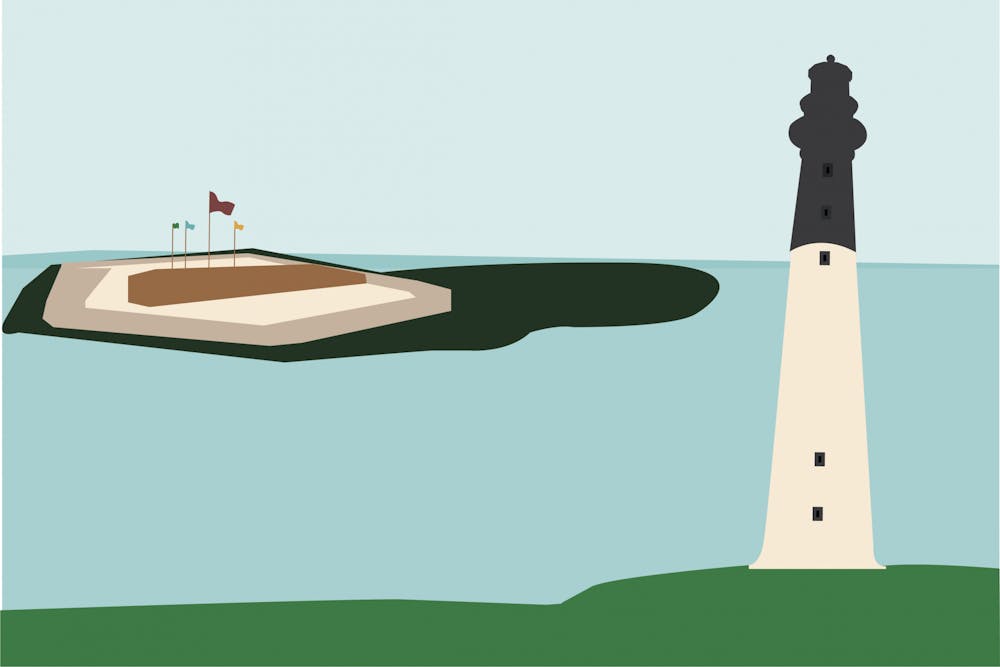As tourism is the No. 1 economy in the state, South Carolina has 76 National Historic Landmarks and ranks seventh in the country for the number of National Historic Landmarks, tying with Ohio.
Visiting spots such as the Historic Camden Revolutionary War Site, Table Rock State Park and the Fort Sumter National Monument are perfect day trips for history buffs at USC.
Al Hester, the historic sites coordinator for the South Carolina Department of Parks, Recreation and Tourism, said he has always been interested in Hampton Plantation, an 18th-century rice plantation near McClellanville.
“(It) has a wonderful mansion that’s fascinating from an architectural history standpoint, but really, more importantly, the plantation was home to generations of African Americans, first as enslaved people then, later, after emancipation as free people,” Hester said.
According to Hester, Black Americans continued working and living on the plantation’s grounds and developed communities after emancipation. Even today, descendants of formerly enslaved individuals still use the park and have volunteered to help guide interpretations.
Hampton Plantation recently resumed tours in June after the COVID-19 pandemic. Masks are not required on the tours, but social distancing is recommended during the tours, according to Hampton Plantation's Facebook page.
Hester also mentioned Table Rock State Park as one of his favorite historical sites in South Carolina. Located in Pickens, South Carolina, the park was developed in the 1930s by the Civilian Conservation Corps (CCC).
“It’s a really great example of the work that the CCC did in the 1930s,” Hester said. “You can, for example, see the rustic style lodge that they built, which is a building that overlooks Pinnacle Lake, and you can see Table Rock Mountain from there,” Hester said.
The CCC also preserves Poinsett State Park in Greenville County, Kings Mountain State Park in York Country and Hunting Island State Park. Hunting Island Park, located in Hunting Island, is home to the only lighthouse in the state that is publicly accessible.
Mark Smith, a Carolina distinguished professor of history at USC, said he enjoys the “texture” of the South and the small historical oddities around South Carolina.
“If you go to Darlington, for example, it’s an interesting place to go ... and you’ve got this massive NASCAR track,” Smith said. “I found that quite interesting and sort of charming in its own way.”
Smith said New Ellenton is a curious town to visit in Aiken County near the banks of the Savannah River. In the 1950s, the entire town was moved by truck to make way for the Savannah River Plant.
Ellenton, the original town, is fenced off so no one can access it, but there are museums in New Ellenton to educate the public about its move.
Smith said he thinks this particular chapter in South Carolina history is ironic because in the 1950s, South Carolina was against any sort of successive federal intervention besides moving New Ellenton to make way for a nuclear plant.
“They were willing to move entire towns but were not really willing to desegregate in any meaningful fashion, at least in the 1950s. So it’s those kinds of ironies that I’m interested in, and places don’t often reveal those ironies,” Smith said.
Sam Queen, director of corporate communications for the South Carolina Department of Parks, Recreation and Tourism, said he enjoys Historic Camden Revolutionary War Site in Camden, South Carolina.
“About 30 minutes up the road in Camden is the brand new Revolutionary War Visitor Center, which interprets the South Carolina history of the American Revolution. It’s brand new, literally opened Aug. 13, and it’s created to kind of celebrate a moment of the Sestercentennial that we’re approaching in 2026,” Queen said.
Hester said he recognizes that people often shy away from South Carolina’s difficult history because “it’s a past that some people are very uncomfortable with.”
“One of the things we do at the plantation sites is emphasize that, yes, slavery was terrible. But the people who were enslaved found ways to be resilient, and to survive, and we need to tell those stories.” Hester said.
As a teacher, Smith said he wants people to understand the nature of South Carolina's past, but he said that some monuments are so "manifestly offensive" that you don't want to see them.
"The trick is to have them put into context, and we're not there yet," Smith said. "Once they are put into context, I think that they will be helpful and help us understand the pace in which we live, and the past that helped generate the present."

